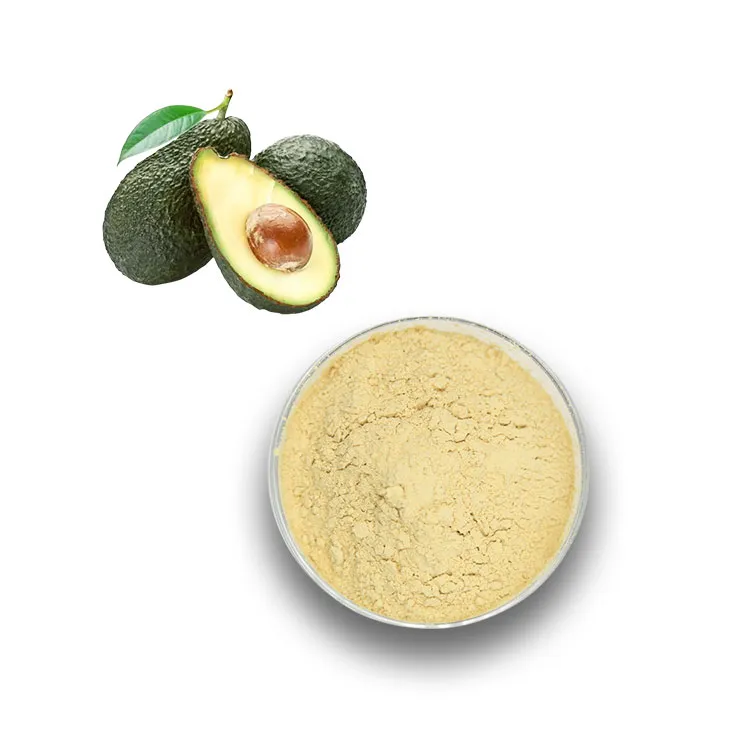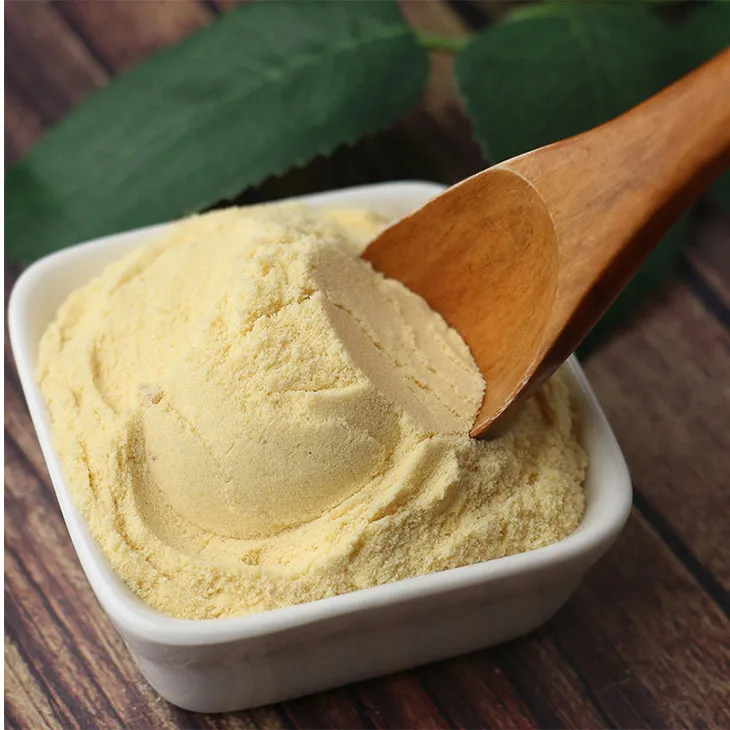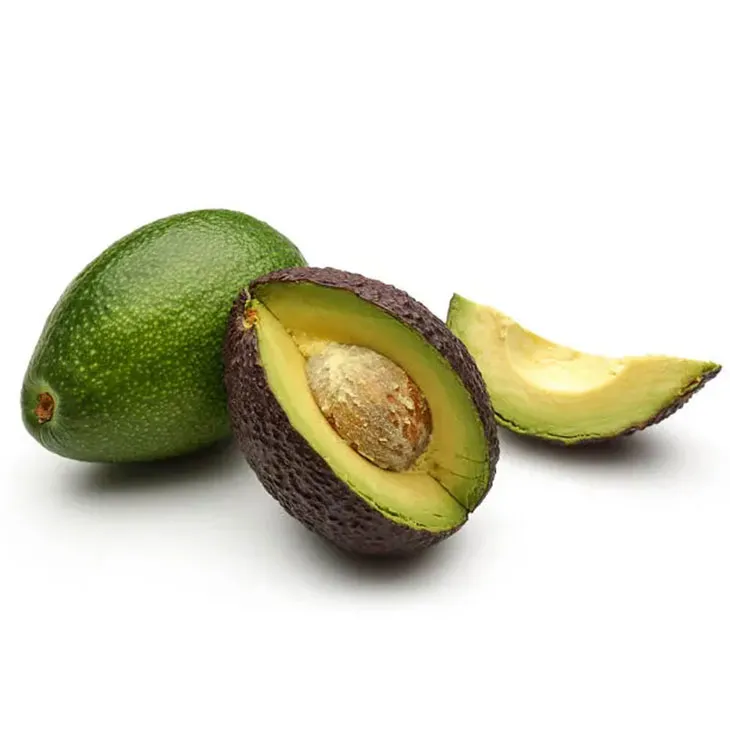- 0086-571-85302990
- sales@greenskybio.com
The extraction process of avocado extract powder.
2024-11-30

1. Introduction
Avocado Extract Powder has gained significant importance in various industries, including cosmetics, food, and pharmaceuticals. It is rich in bioactive compounds such as vitamins, minerals, and healthy fats. The extraction process is crucial to obtain a high - quality product with consistent properties. This article will delve into the detailed extraction process of Avocado Extract Powder.

2. Selection of Avocados
The first step in the extraction process is the careful selection of avocados. High - quality avocados are essential for obtaining a good - quality extract. When selecting avocados, several factors need to be considered:
- Maturity: Avocados should be at the appropriate stage of maturity. Over - ripe avocados may have started to decompose, while under - ripe avocados may not have fully developed their bioactive compounds.
- Appearance: The skin of the avocados should be free from blemishes, cuts, and signs of disease. A smooth and intact skin is usually an indication of a healthy avocado.
- Size and Shape: Although not as critical as maturity and appearance, avocados of a relatively uniform size and shape are preferred for easier handling during the extraction process.

3. Washing of Avocados
Once the avocados are selected, they need to be thoroughly washed to remove dirt, debris, and any potential contaminants. This step is important to ensure the purity of the final extract. The washing process can be carried out using clean water. It is advisable to use gentle agitation or brushing to effectively remove any stubborn dirt particles adhered to the skin of the avocados.

4. Peeling and Pulp Obtaining
After washing, the avocados are ready for peeling and obtaining the pulp. Peeling can be done either manually or using mechanical peelers. Manual peeling allows for more precise removal of the skin, especially for small - scale extractions. However, for large - scale production, mechanical peelers can be more efficient.
Once peeled, the pulp is obtained. The pulp contains most of the bioactive compounds that are of interest in the extraction process. The pulp can be further processed depending on the extraction method.

5. Pulp Preparation
The avocado pulp needs to be prepared in a suitable form for extraction. There are two common methods for this:
- Mashing: The pulp can be mashed using a mortar and pestle or a suitable mechanical masher. This results in a semi - solid mass with a relatively coarse texture. Mashing helps to break down the cell walls of the avocado pulp, facilitating the extraction of bioactive compounds.
- Blending: Another option is to blend the pulp using a blender. Blending can produce a more uniform consistency compared to mashing. It creates a smooth slurry that is ideal for extraction as it provides a larger surface area for the solvent to interact with the bioactive compounds.
6. Extraction with Solvent
The next crucial step is the extraction with a suitable solvent. The choice of solvent depends on various factors, including the nature of the bioactive compounds to be extracted, the solubility characteristics, and the intended use of the extract. Two commonly used solvents are ethanol and water:
- Ethanol as a Solvent
Ethanol is a popular solvent for avocado extraction. It has several advantages:
- It is effective in dissolving a wide range of bioactive compounds, including lipids, polyphenols, and vitamins.
- It has a relatively low boiling point, which makes it easier to remove during the evaporation step later in the process.
- It also has some antimicrobial properties, which can help in preserving the extract during the extraction process.
When using ethanol as a solvent, the mashed or blended avocado pulp is mixed with ethanol in a suitable ratio. This ratio can vary depending on the concentration of bioactive compounds in the pulp and the desired final concentration of the extract. The mixture is then stirred or agitated to ensure thorough contact between the pulp and the solvent.
- Water as a Solvent
Water is another option for avocado extraction. Water - based extraction has its own benefits:
- It is a natural and environmentally friendly solvent.
- It is suitable for extracting water - soluble bioactive compounds such as certain vitamins and minerals.
Similar to ethanol extraction, the avocado pulp is mixed with water in an appropriate ratio and stirred well. However, water - based extracts may require additional processing steps to prevent spoilage due to the presence of water.
7. Filtration
After the extraction process, the mixture needs to be filtered to separate the liquid extract from the solid residues. Filtration is an important step to obtain a pure extract. There are different types of filtration methods that can be used:
- Gravity Filtration: This is a simple method where the mixture is poured through a filter medium, such as filter paper or a porous membrane, under the influence of gravity. Gravity filtration is suitable for small - scale extractions and can effectively remove larger solid particles.
- Vacuum Filtration: For larger - scale operations or when a faster filtration rate is required, vacuum filtration can be used. In this method, a vacuum is applied below the filter medium, which accelerates the filtration process by pulling the liquid through the filter more quickly. Vacuum filtration can also result in a cleaner extract as it can remove finer solid particles.
8. Solvent Removal
Once the liquid extract is obtained after filtration, the next step is to remove the solvent through evaporation. This step is carried out under controlled conditions to ensure the integrity of the bioactive compounds in the extract. The following are some important aspects of solvent removal:
- Evaporation Temperature: The temperature used for evaporation should be carefully controlled. If the temperature is too high, it may cause degradation of the bioactive compounds. For ethanol, a relatively low - temperature evaporation, usually below its boiling point, can be carried out using techniques such as rotary evaporation.
- Evaporation Time: The time required for complete solvent removal depends on factors such as the volume of the extract, the efficiency of the evaporation equipment, and the boiling point of the solvent. It is important to ensure that all the solvent is removed to obtain a concentrated extract.
9. Drying
The final step in the extraction process of Avocado Extract Powder is drying the concentrated extract. Drying converts the liquid extract into a powder form, which is more convenient for storage, transport, and use in various industries. There are two main drying techniques used:
- Spray Drying
Spray drying is a widely used method for drying avocado extract. In this process:
- The concentrated extract is atomized into a fine spray using a nozzle.
- Hot air is then passed through the spray, which causes the water or remaining solvent to evaporate rapidly. The resulting powder is collected in a cyclone separator or other collection devices.
- Spray drying has the advantage of producing a fine - particle - sized powder with good flow properties, which is suitable for applications in the food and pharmaceutical industries.
- Freeze - Drying
Freeze - drying, also known as lyophilization, is another drying method. Here's how it works:
- The concentrated extract is first frozen at a very low temperature.
- Then, under vacuum conditions, the ice in the frozen extract is sublimated directly from the solid state to the gas state without passing through the liquid state. This results in a dry powder with a porous structure.
- Freeze - drying is known for preserving the bioactive compounds better compared to other drying methods as it minimizes thermal and oxidative degradation. However, it is a more expensive and time - consuming process.
10. Conclusion
The extraction process of avocado extract powder involves multiple steps, from the selection of avocados to the final drying step. Each step is crucial in obtaining a high - quality product with a rich content of bioactive compounds. The choice of extraction methods, solvents, and drying techniques can be adjusted according to the specific requirements of different industries. With the increasing demand for natural and functional ingredients, the extraction of avocado extract powder is likely to continue to develop and improve in the future.
FAQ:
What are the key steps in the extraction process of avocado extract powder?
The key steps include selecting high - quality avocados, washing them, peeling to get the pulp, mashing or blending the pulp, using a solvent (like ethanol or water) for extraction, filtering to separate the liquid extract from solid residues, evaporating the solvent under controlled conditions, and finally drying the extract (by techniques such as spray drying or freeze - drying) to get the powder.
Why is it important to select high - quality avocados at the beginning?
High - quality avocados are important because they contain a higher amount and better quality of bioactive compounds. If the starting avocados are of low quality, the resulting extract powder may have lower efficacy and poorer quality in terms of its applications in cosmetics, food, and pharmaceuticals.
What role does the solvent play in the extraction process?
The solvent, such as ethanol or water, plays a crucial role. It helps to dissolve the bioactive compounds present in the avocado pulp. This allows for the separation of these valuable compounds from the rest of the pulp so that they can be further processed to obtain the final extract powder.
How is the solvent removed during the extraction process?
The solvent is removed through evaporation under controlled conditions. This ensures that only the desired extract is left behind, without any harmful residues of the solvent, which is important for the purity and safety of the final avocado extract powder.
Why are drying techniques like spray drying or freeze - drying used in the final step?
These drying techniques are used because they can effectively convert the concentrated avocado extract into a powder form. The powder form is easy to store, transport, and has better stability compared to the liquid extract. It also makes it more convenient for use in different industries.
Related literature
- Avocado Bioactive Compounds: Extraction and Potential Applications"
- "The Science behind Avocado Extract Powder Production"
- "Efficient Extraction Methods for Avocado - Derived Products"
- ▶ Hesperidin
- ▶ citrus bioflavonoids
- ▶ plant extract
- ▶ lycopene
- ▶ Diosmin
- ▶ Grape seed extract
- ▶ Sea buckthorn Juice Powder
- ▶ Beetroot powder
- ▶ Hops Extract
- ▶ Artichoke Extract
- ▶ Reishi mushroom extract
- ▶ Astaxanthin
- ▶ Green Tea Extract
- ▶ Curcumin Extract
- ▶ Horse Chestnut Extract
- ▶ Other Problems
- ▶ Boswellia Serrata Extract
- ▶ Resveratrol Extract
- ▶ Marigold Extract
- ▶ Grape Leaf Extract
- ▶ blog3
- ▶ blog4
-
Bulk purchase of selenium yeast.
2024-11-30
-
The Best Sources of Natural Hops Extract.
2024-11-30
-
Chinese Ganoderma lucidum extract factories.
2024-11-30
-
有机金银花花粉澳大利亚
2024-11-30
-
Chinese stevia extract powder manufacturers.
2024-11-30
-
Chinese Yohimbe Bark Extract Suppliers.
2024-11-30
-
Oyster Mushroom Extract Powder
2024-11-30
-
Citrus bioflavonoids
2024-11-30
-
Agaricus Blazei Extract
2024-11-30
-
Eucommia Ulmoides Extract
2024-11-30
-
Sea buckthorn Juice Powder
2024-11-30
-
Tormentil Extract
2024-11-30
-
Gynostemma pentaphyllum extract
2024-11-30
-
Panax Ginseng Leaf Extract
2024-11-30
-
Ivy Extract
2024-11-30
-
Polygonum multiflorum extract
2024-11-30





















